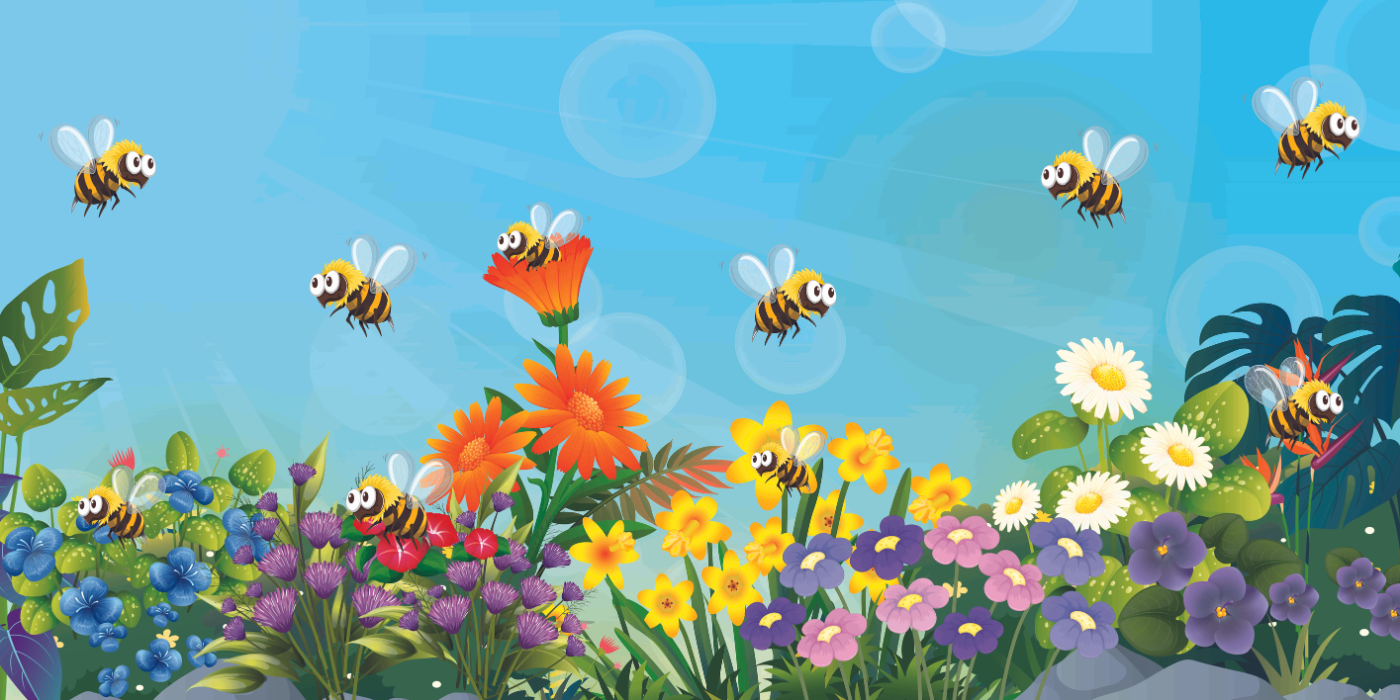
The Magical Bond Between Bees and Wildflowers
Nature's canvas often displays its most breathtaking artistry in the delicate dance between bees and wildflowers. It's a narrative of mutual reliance, vibrant colors, and essential ecological collaboration. Let's embark on a journey to unravel the mesmerizing connection between these two elements of the natural world.
Imagine a world without the gentle hum of bees among the wildflowers—an inconceivable scenario, for these industrious insects are nature's foremost pollinators. Their quest for nectar and pollen inadvertently orchestrates a masterpiece of pollination, essential for the reproduction of flowering plants.
Wildflowers, with their radiant blooms and diverse shapes, beckon bees with promises of sustenance. As bees flit from one blossom to another, collecting nectar for their survival, they unwittingly transfer pollen grains, facilitating the fertilization that allows wildflowers to flourish and reproduce. It's a choreographed dance where each partner gains sustenance and perpetuates life.
Step into a meadow adorned with a myriad of wildflowers—sunflowers standing tall, daisies nodding gently, and lavender exuding its soothing aroma. This tapestry of colors isn't just a feast for the eyes; it's a testament to biodiversity.
The diversity of wildflowers isn't merely ornamental; it's the lifeblood of ecosystems. Different flowers attract distinct species of bees, creating a symbiotic relationship based not just on sustenance but on the intricacies of scent, color, and shape. This biodiversity fosters resilience, supporting a multitude of wildlife and contributing to the health of our planet.
The interdependence between bees and wildflowers extends far beyond the fields. Consider this: a third of the global food supply relies on pollination, with bees playing a pivotal role in this process. Fruits, vegetables, nuts, and even coffee owe their existence, in part, to the pollinating prowess of these tiny winged wonders.
In the agricultural realm, commercial beekeepers transport their colonies to pollinate crops, highlighting the criticality of these buzzing allies in ensuring food security. The more diverse the wildflowers, the healthier and more productive these agricultural ecosystems become.
Yet, this harmonious relationship faces perilous threats. Habitat loss due to urbanization, intensive agricultural practices, pesticide usage, and climate change are eroding the habitats of both bees and wildflowers. The decline in bee populations, in particular, raises alarms for the future of our ecosystems and food systems.
Fortunately, there's hope blooming amidst these challenges. Individuals, communities, and organizations worldwide are championing conservation efforts to protect these vital allies. Planting wildflowers in gardens, creating pollinator-friendly spaces, advocating for pesticide reduction, and supporting habitat preservation initiatives are steps toward nurturing and preserving this delicate balance.
Each of us holds a thread in this intricate tapestry of nature. Whether in urban spaces or rural landscapes, we can contribute to this partnership by cultivating wildflower gardens, avoiding harmful pesticides, and spreading awareness about the importance of bees and wildflowers in our ecosystems.
Imagine the impact of every backyard transformed into a haven for pollinators or every community garden blooming with native wildflowers. It's within our power to nurture and safeguard this symbiotic relationship for the generations yet to come.
As we marvel at the connection between bees and wildflowers, let's revel in the beauty and intricacy of nature's design. Let's celebrate this interdependence that not only sustains life but also fills our world with wonder and vibrancy.
The next time you stroll through a field or tend to your garden, take a moment to appreciate the buzz of life around you. In these tiny winged creatures and the blossoms they frequent, lies a profound lesson—a lesson of interconnectedness and the power of collaboration in nurturing our planet.
In closing, let's pledge to embrace, protect, and cherish this magical alliance between bees and wildflowers—a partnership that paints our world with hues of joy and sustains the very fabric of life itself.
General Question About Bees and Wild Flowers
Why are bees considered essential pollinators for wildflowers?
Bees are essential pollinators because they transfer pollen from one flower to another while collecting nectar, facilitating the fertilization process necessary for wildflowers to reproduce and flourish.
How does biodiversity of wildflowers benefit ecosystems?
Biodiversity of wildflowers attracts various species of bees, supports a wide range of wildlife, enhances ecosystem resilience, and contributes to the overall health of the planet by fostering diverse and robust ecological interactions.
What impact do bees have on global food systems?
Bees play a crucial role in pollinating a third of the global food supply, including fruits, vegetables, nuts, and coffee, thereby ensuring food security and agricultural productivity.



Leave a comment